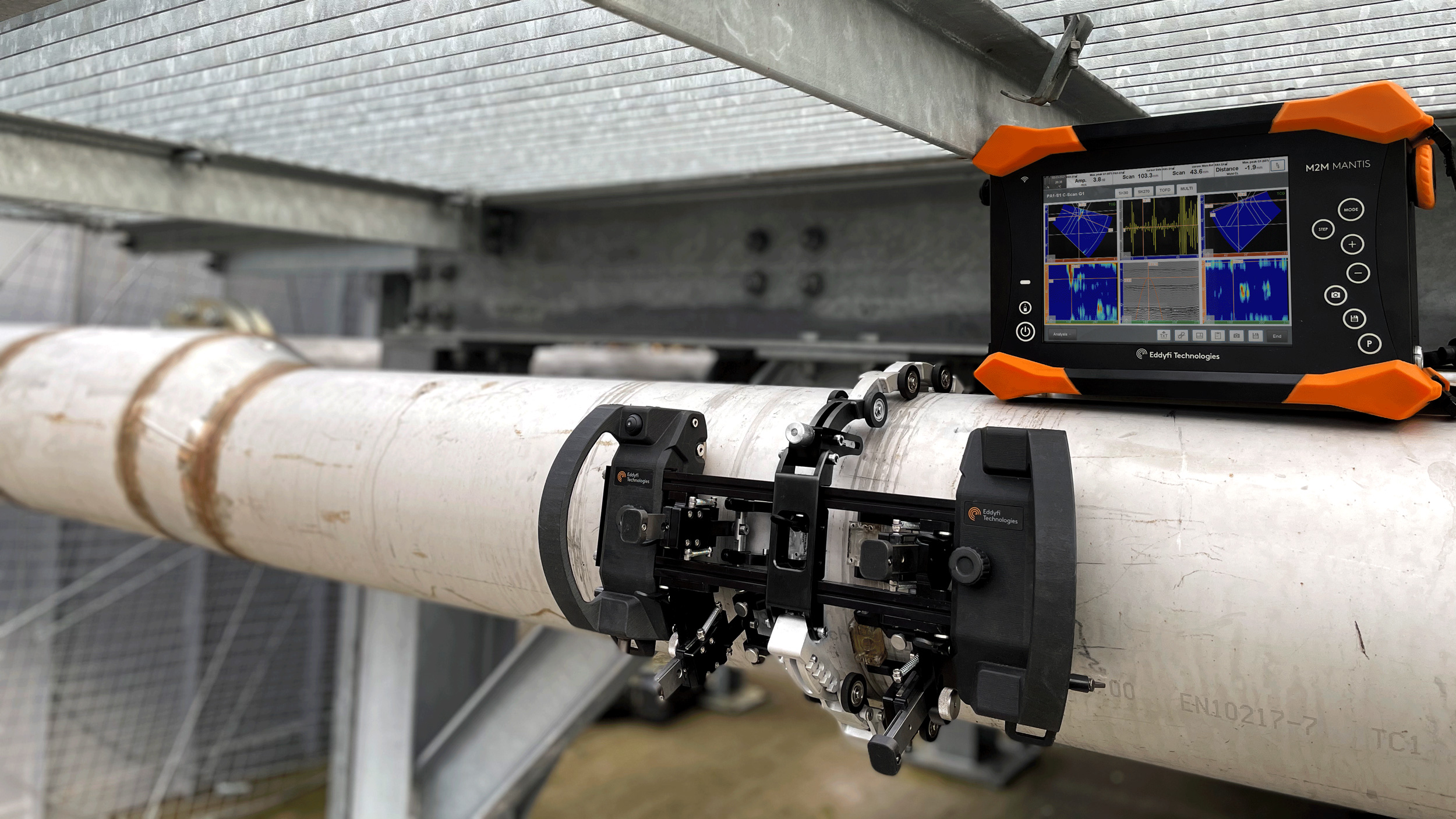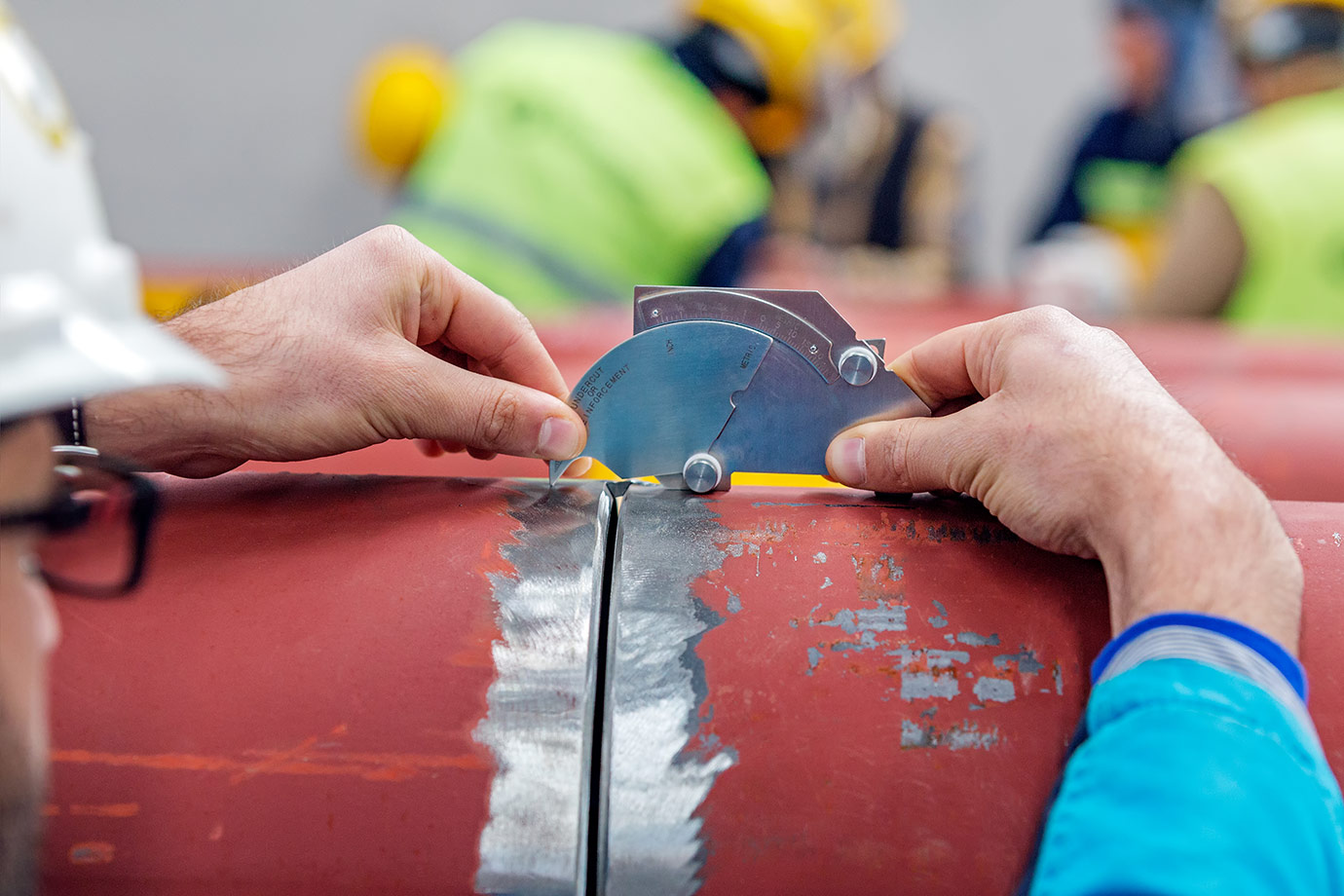Comprehending the Principles of Pipe Welding Inspection: Important Aspects for Assessing Weld Top Quality and Preventing Failures
In the realm of pipe welding evaluation, the stakes are undoubtedly high, demanding a detailed understanding of essential concepts to ensure weld high quality and minimize failure threats. Different important elements enter into play, including the option of suitable materials, the application of advanced assessment strategies, and the recognition of common welding defects. In addition, adherence to regulatory standards plays an essential duty in preserving system stability. Yet, the complexities fundamental in these procedures raise vital questions concerning best methods and arising modern technologies that might redefine assessment methods-- concerns that call for additional expedition.
Value of Weld Quality
The honesty of a pipe is basically dependent on the quality of its welds, making weld top quality a critical aspect in ensuring effective and secure procedure. A pipe weld offers as a joint point where materials are joined, and any type of shortages in this field can bring about significant structural weak points. Poor bonded quality can lead to leaks, ruptures, and disastrous failings, presenting serious safety hazards and environmental threats.
Numerous variables add to the top quality of a weld, consisting of the choice of welding procedure, the abilities of the welder, and the conditions under which the welding is carried out - Pipeline Welding Inspection. Inadequate prep work, improper warmth input, and contamination can endanger weld honesty, bring about problems such as porosity, insufficient combination, or cracks. Therefore, rigid high quality control procedures should be executed throughout the welding process to mitigate these threats
In addition, the lasting performance of a pipeline is heavily affected by the longevity of its welds. High-grade welds not just improve the overall toughness of the pipeline however also expand its solution life, minimizing the need for costly fixings and downtime. For this reason, guaranteeing remarkable weld quality is extremely important in pipe style and maintenance techniques.
Secret Inspection Strategies
Guaranteeing weld quality necessitates the application of effective examination methods to recognize prospective flaws prior to they lead to failings. Pipeline Welding Inspection. Amongst the most commonly made use of techniques are aesthetic assessment, radiographic screening (RT), ultrasonic testing (UT), and magnetic fragment testing (MT) Each strategy is and serves an unique purpose selected based upon the specific demands of the pipe job
Visual inspection is the first line of defense, enabling examiners to evaluate surface conditions, placement, and total craftsmanship. Radiographic screening supplies an in-depth sight of interior weld stability by utilizing X-rays or gamma rays to discover subsurface imperfections.
Ultrasonic screening utilizes high-frequency acoustic waves to review the density and honesty of welds, making it suitable for identifying inner discontinuities. Magnetic fragment screening is a reliable approach for determining surface area and near-surface issues on ferromagnetic products by applying electromagnetic fields and great ferrous fragments. By using these essential evaluation strategies, pipeline welding inspectors can make certain the finest criteria are maintained, inevitably causing safer and extra reputable pipe systems.
Typical Welding Defects
In the world of pipeline welding, recognizing common welding defects is vital for maintaining architectural stability and security. These flaws can lead to disastrous failures if not recognized and dealt with immediately. Among one of the most widespread flaws are porosity, which occurs when gas allures in the weld metal, producing voids that deteriorate the joint. Another substantial issue is absence of fusion, where the weld metal does not adequately bond with the base product, compromising the joint's stamina.

Fractures are additionally an essential worry, showing up in numerous forms such as hot cracks, cold cracks, and root cracks. Each type positions distinct difficulties and needs certain assessment methods for discovery. Undercut is one more flaw that can minimize the weld's cross-sectional area, causing anxiety concentration points, while slag inclusion occurs when non-metallic material becomes entraped in the weld swimming pool, detrimentally impacting the mechanical residential or commercial properties of the weld.
Furthermore, incorrect grain form can cause unequal tension distribution. Identifying these usual flaws is vital for inspectors and welders alike, as very early discovery and adjustment are vital to ensuring the long life and dependability of pipeline systems.

Materials and Their Effect
Picking the appropriate materials for pipeline welding dramatically affects the overall performance and dependability of the bonded joints. The selection of base steels, filler products, and coverings plays a vital duty in determining the strength, corrosion resistance, and sturdiness of the welds. As an example, carbon steel is generally made use of for its equilibrium of toughness and price, yet it might be susceptible to corrosion in certain environments, necessitating using corrosion-resistant alloys or protective coverings.
Furthermore, dissimilar metal welding requires careful consideration of thermal development properties and potential galvanic deterioration. The compatibility of products can substantially impact the microstructure of the weld, causing variations in mechanical homes. For instance, stainless steel offers superb deterioration resistance however may require details filler products to guarantee a sound weld joint.
Additionally, the influence of temperature and environmental problems on material selection can not be taken too lightly. High-strength steels might lose ductility at raised temperature levels, while low-temperature applications my latest blog post might call for products with enhanced toughness. Inevitably, comprehending the implications of product choices is essential for attaining optimal weld quality and protecting against failings in pipeline systems.

Regulatory Specifications and Conformity
Regulatory standards and compliance play a pivotal duty in pipe welding, developing the structure within which risk-free and efficient practices are kept. These criteria are created by different organizations, including the American Culture of Mechanical Designers (ASME), the American Welding Culture (AWS), and the Pipeline and Hazardous Materials Safety And Security Management (PHMSA) Following these policies ensures that welding treatments fulfill the needed quality and safety standards.
Compliance with regulatory criteria is crucial not just for guaranteeing the integrity of the welds yet likewise for protecting the setting and public security. Inspectors are entrusted with confirming that welding operations abide by these requirements through extensive evaluations of both the processes and the last welds. This includes examining welder certifications, welding treatments, and the products made use of.
Failing to adhere to recognized laws can cause read this post here significant repercussions, including pricey repair services, legal obligations, and catastrophic failings. Therefore, organizations have to integrate conformity into their operational techniques, fostering a society of safety and high quality. Normal training and audits are crucial parts in maintaining adherence to these regulative criteria, guaranteeing that all workers are educated and geared up to maintain the highest levels of pipe welding top quality.
Conclusion
Finally, a thorough understanding of pipeline welding evaluation is important for making certain weld quality and avoiding failures. By utilizing crucial examination techniques and recognizing common welding problems, examiners can successfully examine the honesty of welds. Factor to consider of product option and adherence to governing criteria further enhance the reliability and safety of pipeline systems. Ultimately, these practices add to the avoidance of leakages and tragic failings, emphasizing the essential relevance of strenuous assessment procedures in pipeline building and maintenance.
In the world of pipeline welding inspection, the risks are without a doubt high, requiring a comprehensive understanding of fundamental concepts to guarantee weld quality and alleviate failure threats (Pipeline Welding Inspection).The stability of a pipeline is basically reliant on the quality of its welds, making weld high quality a crucial variable in making sure safe and reliable operation.Numerous elements add to the high quality of a weld, consisting of the option of welding procedure, you could try this out the skills of the welder, and the problems under which the welding is performed. Undercut is an additional defect that can minimize the weld's cross-sectional area, leading to anxiety focus points, while slag incorporation occurs when non-metallic product becomes caught in the weld swimming pool, adversely impacting the mechanical residential or commercial properties of the weld
In verdict, a comprehensive understanding of pipeline welding examination is vital for making sure weld top quality and avoiding failings.